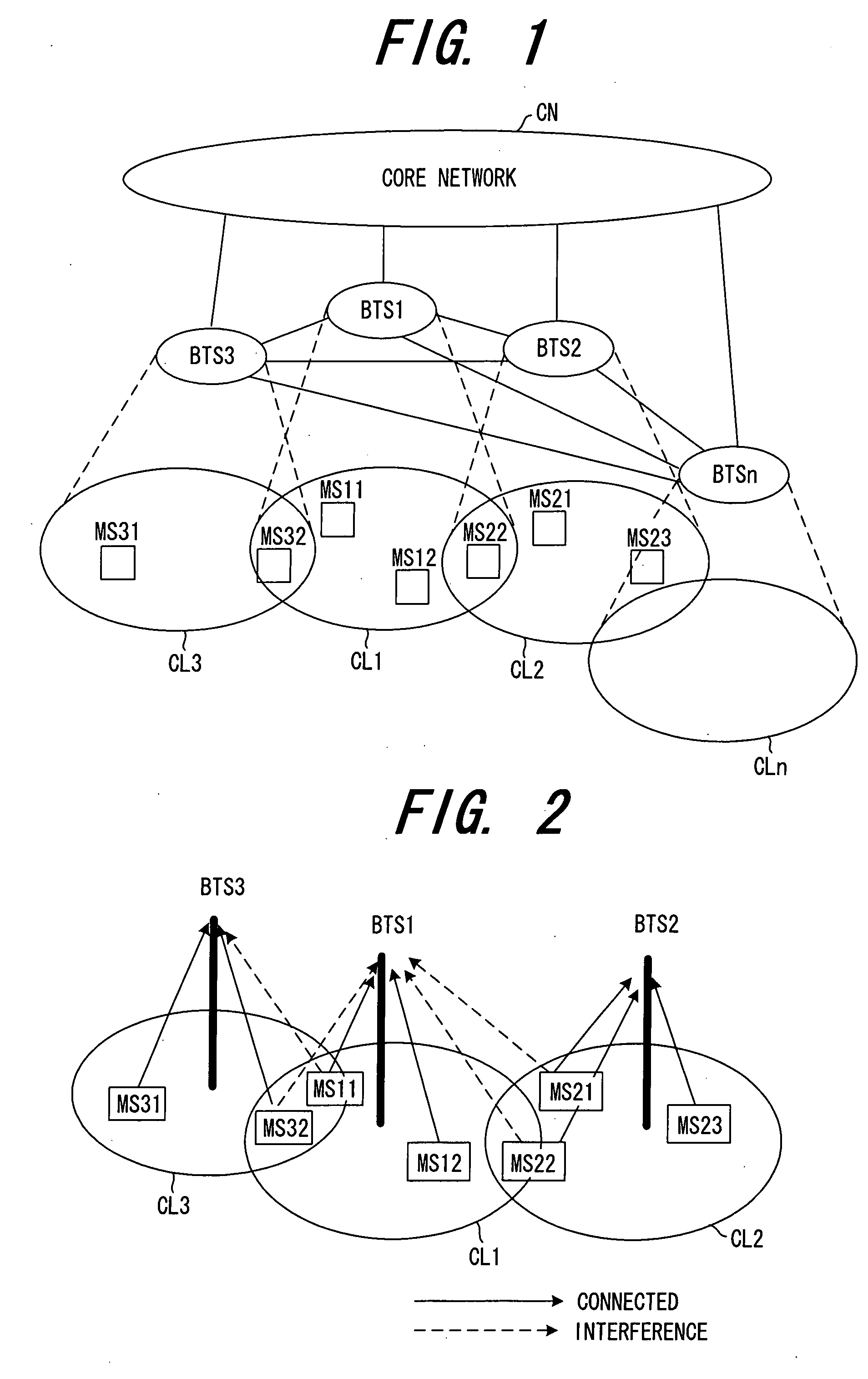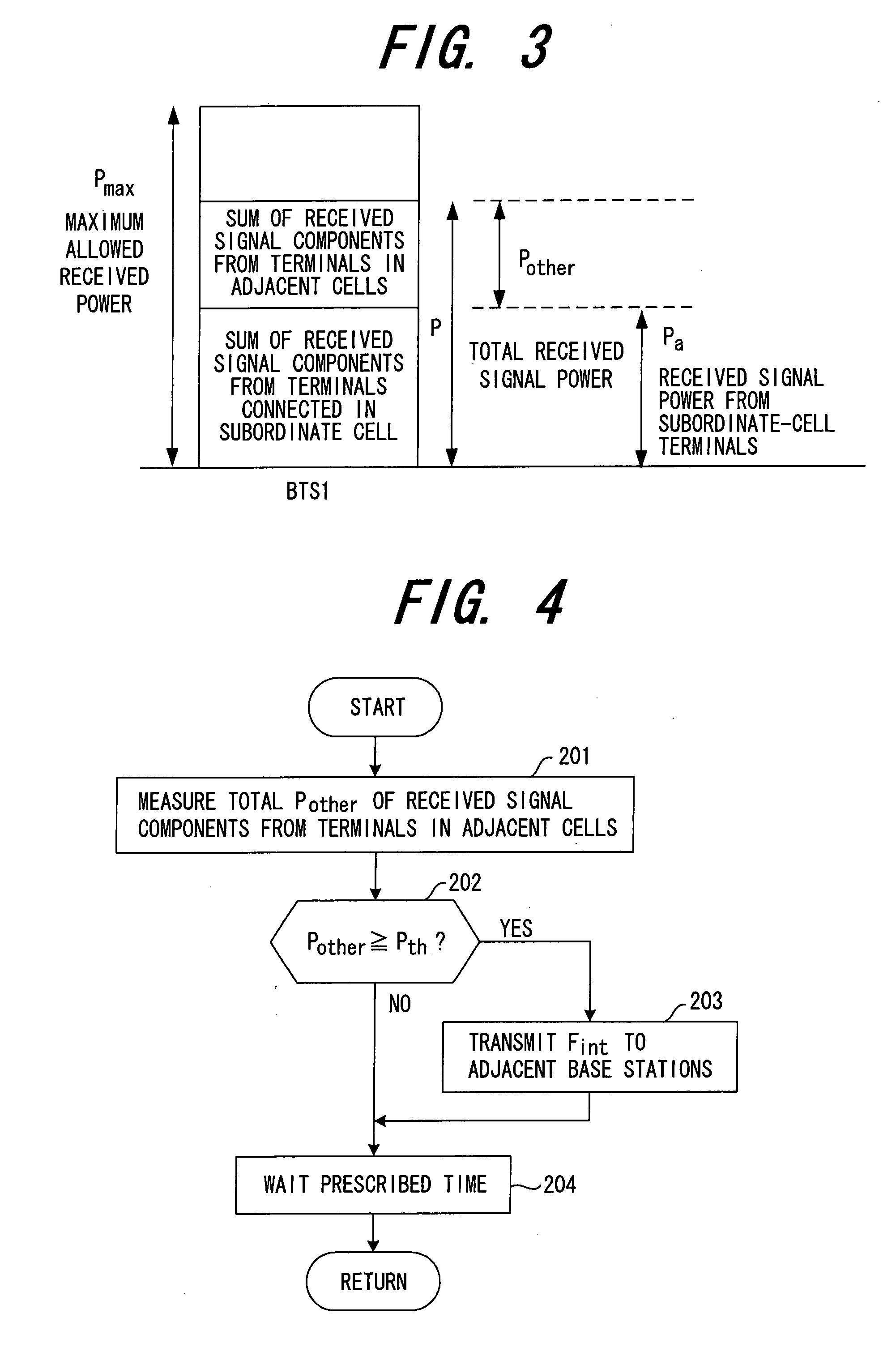Base station and interference reduction method in base station
a base station and interference reduction technology, applied in the field of base station and interference reduction method in the base station, can solve the problems of limiting the radio resources of the adjacent cell, affecting the interference power of adjacent cells, and affecting the efficiency of the base station, so as to achieve the effect of reducing interference power
- Summary
- Abstract
- Description
- Claims
- Application Information
AI Technical Summary
Benefits of technology
Problems solved by technology
Method used
Image
Examples
first embodiment
(A) First Embodiment
[0040] (a) Network Configuration
[0041]FIG. 1 shows a network configuration to which the invention can be applied; numerous base stations BTS1 to BTSn are connected to a core network CN, and the base stations can communication with mobile terminals MSij within cells CL1 to CLn. The core network CN comprises the functions of both the core network shown in FIG. 14, and a radio network controller. The base stations are connected by wire (or, for example, wirelessly using the microwave band) with adjacent base stations, and comprise interfaces for mutual communication. The network configuration of FIG. 1 is for example a network as proposed by 3GPP TR 25.897 V0.3.0 (2003-08).
[0042]FIG. 2 shows a situation in which, in three cells CL1 to CL3, mobile terminals MS2j and MS3k in adjacent cells CL2 and CL3 impart interference to the base station BTS1 of the cell CL1 of interest. In FIG. 2, three cells are shown in order to facilitate the explanation. In these three cells...
second embodiment
(B) Second Embodiment
[0080] In the first embodiment, the total received signal power from mobile terminals in all adjacent cells (the total adjacent received signal power) Pother was measured based on equation (1). In a second embodiment, as shown in FIG. 10, the total received signal powers from mobile terminals in a cell (adjacent received signal power) Pcell 1 to Pcell N is measured for each cell among all adjacent cells cell 1 to cell N, and the equation below is used, that is, the adjacent received signal powers Pcell 1 to Pcell N for all adjacent cells are totaled to calculate the total adjacent received signal power Pother. Pother=∑n=1NPcell n(2)
[0081] (Here it is assumed that each mobile terminal performs scrambling using a scramble code unique to the cell before transmitting uplink data.) The adjacent received signal powers Pcell 1 to Pcell N for the adjacent cells cell 1 to cell N are measured by despreading received signals using the scramble code for each adjacent ce...
PUM
 Login to View More
Login to View More Abstract
Description
Claims
Application Information
 Login to View More
Login to View More - R&D
- Intellectual Property
- Life Sciences
- Materials
- Tech Scout
- Unparalleled Data Quality
- Higher Quality Content
- 60% Fewer Hallucinations
Browse by: Latest US Patents, China's latest patents, Technical Efficacy Thesaurus, Application Domain, Technology Topic, Popular Technical Reports.
© 2025 PatSnap. All rights reserved.Legal|Privacy policy|Modern Slavery Act Transparency Statement|Sitemap|About US| Contact US: help@patsnap.com



